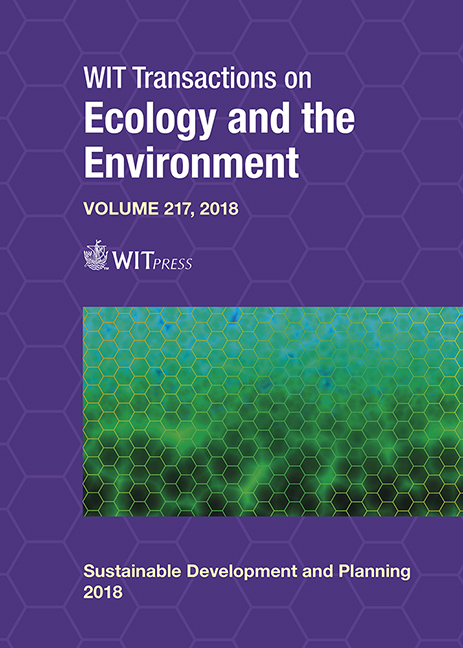INDICATOR ENGINEERING FOR LAND TAKE CONTROL AND SETTLEMENT SUSTAINABILITY
Price
Free (open access)
Transaction
Volume
217
Pages
10
Page Range
437 - 446
Published
2018
Size
591 kb
Paper DOI
10.2495/SDP180391
Copyright
WIT Press
Author(s)
LORENA FIORINI, ALESSANDRO MARUCCI, FRANCESCO ZULLO, BERNARDINO ROMANO
Abstract
In this paper, we describe some indicators used to interpret urban sprawl and some of its effects on the environmental and ecosystem matrix. These are examples taken from a number of research programs that the University of L’Aquila has been engaged in over the past ten years that have produced more than 15 new indicators of urban sprawl and the numerous threats that the latter poses for land and the environment. Using some parameters we were able to prove that the expansive settlement model that prevailed in Italy over the past 50 years does not follow the conventional international standard of sprawl, but has a different pattern named “sprinkling”. Other indicators show that this growth is independent of population dynamics, at least at microterritorial level (municipalities), while the result is different on a macroterritorial scale (regions). Furthermore, this highly sprinkled type of settlement also has adverse effects on the fragmentation of ecosystems and biodiversity hot spots and using other indices we were able to highlight these phenomena too, which are scarcely considered as territorial “diseases” that need to be tackled and overcome. Carefully designed sets of parameters, such as those described in this paper, should be included in technology-assisted regional platforms to control and govern land transformation, in order to make the pursuit of improved land planning more efficient than what it is today.
Keywords
indicator engineering, land take, settlement sustainability, urban sprinkling





